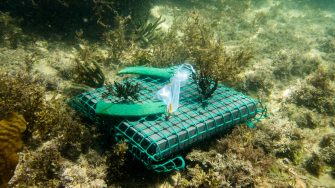
More than 22% of the world’s coastlines are exposed to artificial light at night (ALAN). Despite increasing evidence of the immediacy, severity and the phylogenetic breadth of night-time lighting impacts, ALAN is expected to increase globally in both intensity and spatial extent. However, the potential impacts of this emerging threat on the overall ecology of coastal communities are still largely unknown. We are working to address these knowledge gaps by assessing how ALAN affects the overall diversity and functioning of coastal urbanised systems, and how it interacts with other stressors such as warming.
Current research projects:
-
To date, most studies on ALAN have focussed on effects on the biology and evolution of individuals or populations of plants and animals, and have largely overlooked interactions with other stressors. However, the loss or changes in species within the same food-web can affect the entire network, with unpredictable consequences for the communities and ecosystems. We're conducting manipulative experiments in the lab and in situ, to test the effects of ALAN on different species and their interactions.
-
As light pollution continues to spread, it's expected to interact with other widespread stressors, such as ocean warming, which could amplify or suppress its effects. We're working to understand the interactive effects of ALAN and other stressors to improve coastal management and planning.
-
Habitat-forming species underpin biodiversity and functioning in ecosystems. However, the effects of ALAN on marine habitat-forming species, such as seaweeds, have been highly limited. We're working to bridge this gap by investigating how habitat-forming species respond to light pollution.
